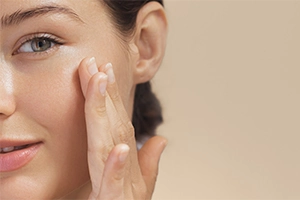AquaGold vs. Microneedling: A Detailed Comparison
Posted:
 In aesthetic dermatology, both AquaGold® fine touch™ and traditional microneedling stand out as popular treatments for skin rejuvenation. While they share the common ground of utilizing fine needles to improve skin appearance, their underlying mechanisms, objectives, and outcomes present crucial differences. Understanding these distinctions is key to choosing the most suitable treatment for your specific skin concerns.
In aesthetic dermatology, both AquaGold® fine touch™ and traditional microneedling stand out as popular treatments for skin rejuvenation. While they share the common ground of utilizing fine needles to improve skin appearance, their underlying mechanisms, objectives, and outcomes present crucial differences. Understanding these distinctions is key to choosing the most suitable treatment for your specific skin concerns.
AquaGold: The Art of Micro-Infusion
AquaGold is precisely defined as a microinjection device, not a microneedling device. Its innovative design incorporates patented Microchannel Technology® and features 500-micron microchannels (equivalent to 0.5 mm). These microchannels are crafted by 20 ultra-fine, hollow, gold-plated needles, which are thinner than a human hair.
The primary function of AquaGold is to gently infuse microinjections of custom-blended solutions directly into the superficial layers of the skin. These bespoke “cocktails” can be tailored to individual skin goals and commonly include ingredients such as hyaluronic acid for deep hydration and subtle plumping, various vitamins and peptides for nourishment, or even diluted neurotoxins like Botox®. It is essential to note that when neuromodulators like Botox are used in conjunction with AquaGold, their primary purpose is to enhance overall complexion by reducing pore size and fine lines, rather than relaxing muscles, as is typically the case with traditional neuromodulator injections.
AquaGold’s direct delivery system is designed to minimize common complications such as bruising and bleeding typically associated with standard syringe injections. Patients typically experience zero downtime, with only possible short-term redness or tenderness, and can generally resume normal activities immediately. The results are often immediate due to the infused ingredients, and the treatment also stimulates the body’s natural collagen and elastin production, with effects typically lasting 3 to 4 months. Areas most commonly treated include the face, neck, décolletage, chest, and hands.
Microneedling: The Power of Collagen Induction
In contrast, traditional microneedling is a therapy primarily focused on collagen induction. This minimally invasive dermatological procedure involves using instruments with rows of thin needles to create controlled skin injuries by penetrating the dermis to a uniform depth.1 These micro-injuries trigger the body’s natural wound-healing processes, resulting in increased production of collagen and elastin, which are essential for maintaining healthy, youthful skin.
The depth of needles in microneedling devices varies significantly based on the treatment area and the specific skin concern. For general skin rejuvenation and addressing wrinkles, needle lengths typically range from 0.5 mm to 1.0 mm. For deeper issues such as acne scars or other severe scarring, longer needle lengths, generally 1.5 mm to 2.0 mm, may be used. Automated devices allow for adjustable needle depths, typically ranging from 0.5 millimeters to 2 millimeters.
Microneedling is commonly used for a wide range of conditions, including acne scars, wrinkles, hyperpigmentation, stretch marks, and even hair loss. While it can enhance skin health and elasticity through collagen remodeling, the visible results often take longer to appear (3 to 6 months) and require multiple sessions (e.g., 4-6 sessions for acne scars).2
Post-treatment, patients can expect short-term redness or swelling for up to five days, and some discomfort may be felt, especially near bony areas. A key advantage of microneedling is its minimal risk of post-inflammatory hyperpigmentation, making it a safe option for individuals with darker skin tones.3 It can also be combined with other modalities or topical serums to enhance outcomes.
Key Differences at a Glance
- Mechanism: AquaGold is a microinjection device that focuses on the direct infusion of solutions, while microneedling is a collagen induction therapy that primarily relies on controlled physical micro-injury to stimulate natural healing.
- Needle Depth: AquaGold uses a fixed depth of 500 microns (0.5 mm). Microneedling features variable needle depths, ranging from 0.5 mm to 2.0 mm for professional treatments, chosen based on the specific condition and area being treated.
- Primary Goal: AquaGold’s main aim is the superficial delivery of custom ingredients for hydration, brightening, and overall complexion improvement. Microneedling’s primary goal is collagen and elastin stimulation to address concerns like scars, wrinkles, and texture irregularities.4
- Downtime & Pain: AquaGold typically offers zero downtime with minimal discomfort, avoiding micro-tears. Microneedling can result in a few days of redness and swelling. While topical anesthetics are used, deeper treatments may involve some bleeding.
- Results Onset: AquaGold can provide immediate visible results due to the infused serums. Microneedling results are generally more gradual, as they depend on the body’s natural collagen remodeling process over several months.5
Learn More About AquaGold & Microneedling
Ultimately, the choice between AquaGold and microneedling depends on your specific aesthetic goals and skin concerns. At 740 Park Beauty & Hair Restoration, we tailor every skin treatment to your unique needs and goals. Whether you’re considering microneedling, AquaGold, or a combination of both, our experienced team can help you choose the best path forward for your skin care needs. Contact us today to schedule a consultation.
1 StatPearls. Microneedling. https://www.ncbi.nlm.nih.gov/books/NBK459344/. Accessed July 9, 2025.
2 Indian Dermatology Online Journal. Microneedling: Advances and widening horizons. https://pmc.ncbi.nlm.nih.gov/articles/PMC4976400/. Accessed July 9, 2025.
3 Cureus. Microneedling in Dermatology: A Comprehensive Review of Applications, Techniques, and Outcomes. https://pmc.ncbi.nlm.nih.gov/articles/PMC11499218/. Accessed July 9, 2025.
4 Cureus. Microneedling in Dermatology: A Comprehensive Review of Applications, Techniques, and Outcomes. https://pmc.ncbi.nlm.nih.gov/articles/PMC11499218/. Accessed July 9, 2025.
5 Cleveland Clinic. Microneedling. https://my.clevelandclinic.org/health/treatments/23113-microneedling. Accessed July 9, 2025.
